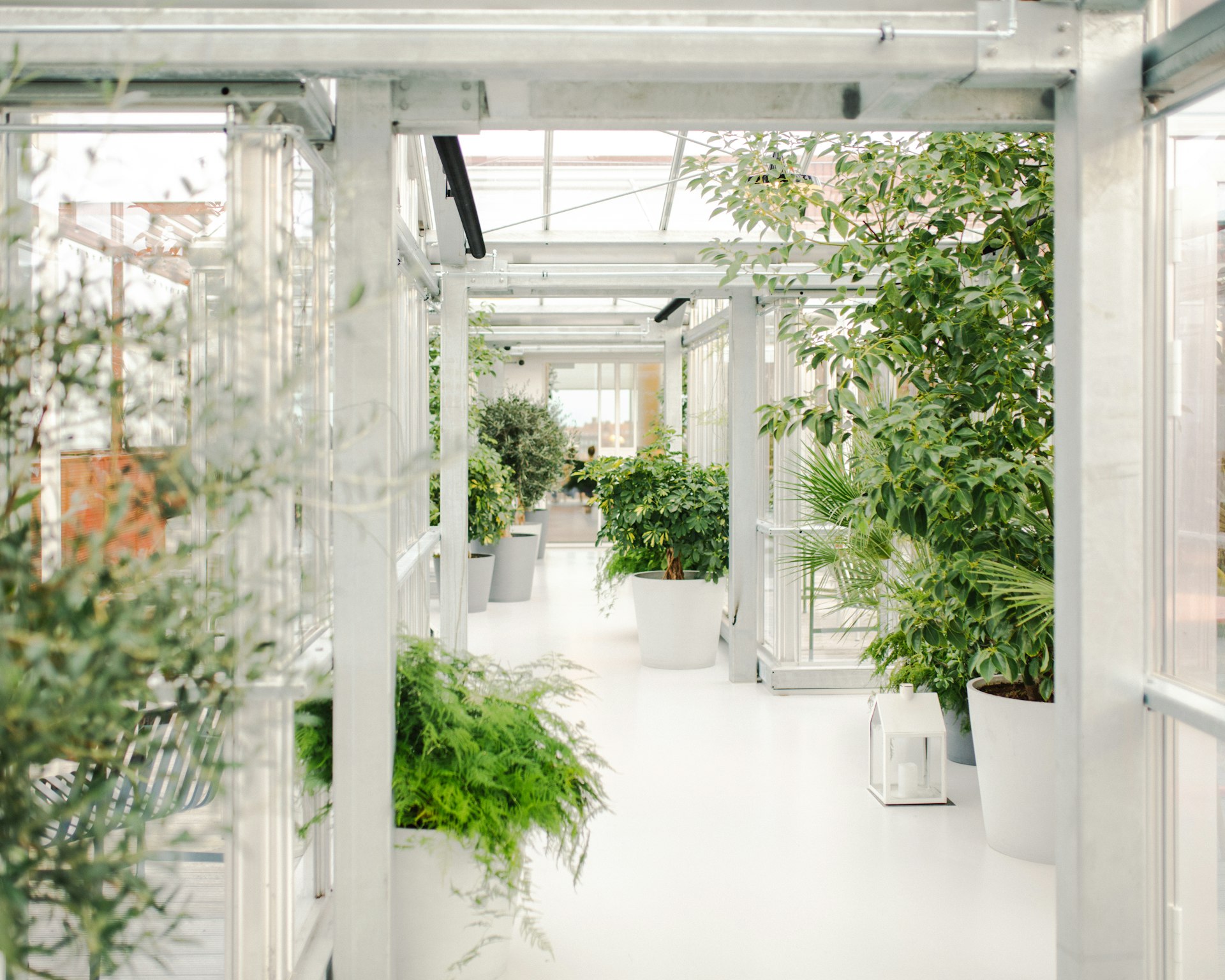How to Build and Operate a Low-Energy Indoor Greenhouse for Winter Growing


Photo by Keisha �stergaard on Unsplash
Introduction: The Need for Low-Energy Winter Greenhouses
Growing fresh produce during the coldest months is possible with the right indoor greenhouse setup. High heating costs can deter many, but modern low-energy techniques and designs enable year-round cultivation with minimal energy use. This guide explores how to plan, build, and operate a low-energy indoor greenhouse for winter growing, drawing on proven models and research-backed practices.
Understanding Low-Energy Greenhouse Design
Low-energy greenhouses, especially those designed for winter, rely on passive solar heating , superior insulation, and strategic thermal mass to regulate temperatures without excessive energy consumption. Deep Winter Greenhouses (DWGs) are a leading example, utilizing a south-facing glazed wall and heavily insulated north, east, and west walls to maximize heat retention. Solar-heated air is circulated and stored in underground thermal mass materials such as soil or rock, slowly releasing heat at night and maintaining stable temperatures with little or no supplemental heating. These systems can function effectively even in northern climates, such as Minnesota, where farm-scale DWGs are already in use for winter crop production [5] .
Essential Components for Low-Energy Winter Growing
Successful winter greenhouses combine several key features:

Photo by Libre Leung on Unsplash
- Orientation and Glazing: Position your greenhouse east-west with a steeply sloped, south-facing wall made of high-quality glazing (such as double or triple-wall polycarbonate) to maximize solar gain [5] .
- Insulation: Insulate north, east, and west walls, as well as the foundation, to reduce heat loss. Rigid foam insulation is a common choice.
- Thermal Mass: Incorporate materials that absorb and store heat, such as water tanks, stone, or above-ground ponds. The Growing Dome greenhouse, for example, uses a central pond as a thermal mass, paired with a solar-powered air system to further boost efficiency [1] .
- Ventilation: Proper airflow is essential. Even in winter, sunny days can cause overheating. Automatic vents or manual window adjustment help regulate temperature and humidity [4] .
- Lighting: While many winter crops can thrive with natural sunlight, adding energy-efficient LED grow lights can extend day length and improve yields, especially for microgreens and seedlings [3] .
Choosing the Right Crops for Winter Greenhouses
Low-energy greenhouses excel at growing cold-hardy and frost-tolerant crops . These vegetables can withstand fluctuating winter temperatures and thrive in shorter daylight conditions:
- Leafy greens: spinach, kale, Swiss chard, lettuce, arugula
- Root vegetables: carrots, beets, parsnips, rutabagas
- Alliums: leeks, green onions
- Herbs: parsley, cilantro, chives
- Others: endive, Brussels sprouts, collard greens
Exposing these crops to cold can even improve flavor, as natural sugars accumulate to protect plant cells [4] . For best results, sow seeds in late summer or early autumn so plants are established before the harshest cold sets in [2] .
Step-by-Step: Building Your Low-Energy Indoor Greenhouse
- Site Selection: Choose a location with maximum southern exposure and access to utilities if supplemental lighting or ventilation is needed.
- Design and Materials: Decide on a structure type-geodesic domes, lean-tos, or hoop houses are popular for home use. Source high-insulation glazing, rigid foam, and thermal mass materials.
- Construction: Follow blueprints for your chosen design. Ensure all joints are airtight and that the structure is well-sealed to prevent heat leaks. Build the foundation with insulation extending below ground level for improved thermal retention.
- Install Thermal Mass: Place water barrels, a central pond, or stone beds inside the greenhouse where solar gain is highest.
- Set Up Ventilation and Lighting: Install vents and, if needed, LED lighting on timers to simulate longer days. Connect lights to energy-efficient power sources, such as a battery bank or solar panels, for off-grid operation [3] .
- Prepare Beds and Plant: Use raised beds or large containers with high-quality soil. Plant cold-hardy crops spaced for airflow and access. Mulch heavily to retain soil warmth.
For detailed construction plans and climate-specific advice, you may contact your local university extension office or seek out regional greenhouse builders. Some institutions, like the University of Minnesota Extension, offer free resources and workshops on deep winter greenhouse construction and operation [5] .
Tips for Efficient Operation and Maintenance
Operating your greenhouse efficiently in winter requires attention to detail:
- Monitor temperature and humidity: Place max/min thermometers and hygrometers at plant level. Adjust ventilation or add insulation as needed.
- Water wisely: Plants grow more slowly in winter and need less water. Overwatering can lead to disease.
- Manage pests naturally: Reduced ventilation and dense plantings can favor pests. Use sticky traps, maintain airflow, and remove debris regularly.
- Crop rotation: Rotate crops seasonally to maintain soil health and reduce disease pressure.
Ongoing observation and small adjustments are key to a thriving winter greenhouse. Many growers report that, with practice, their energy costs are significantly lower than traditional heated greenhouses, and yields of greens and root crops remain consistent throughout the cold season [1] .
Common Challenges and Solutions
Light Deficiency: Short winter days can limit plant growth. Supplement with LED grow lights if necessary, prioritizing energy-efficient models and only extending “daylight” by a few hours to minimize power use [3] . Overheating: Even in winter, greenhouses can overheat on sunny days. Use automatic vent openers or manually ventilate to protect plants [4] . Condensation: High humidity from plant transpiration can cause condensation and mold. Open vents periodically and use fans if needed to maintain airflow.
If you encounter persistent problems, consider reaching out to local horticultural societies, university extension programs, or experienced greenhouse operators for tailored advice. Many of these organizations offer resource guides and may even host workshops or online Q&A sessions.
Alternative Approaches and Additional Resources
If space or budget is limited, consider smaller-scale solutions such as insulated cold frames, indoor grow tents with LED lights, or converting a south-facing room into a micro-greenhouse using shelving and clear panels. These approaches use the same principles of maximizing sunlight, insulating well, and selecting frost-hardy crops.
To access more information, you can:
- Contact your local Cooperative Extension office for climate-appropriate advice and workshops on winter growing techniques
- Search for “deep winter greenhouse resources” from university agriculture programs, such as the University of Minnesota Extension
- Seek out reputable greenhouse kit manufacturers with a proven track record in low-energy, winter-capable designs
For further reading and case studies, refer to research and demonstration projects from established institutions and agricultural organizations. These sources provide up-to-date data, building guides, and troubleshooting advice for winter greenhouse operation.
Conclusion
Building a low-energy indoor greenhouse for winter growing is an achievable goal for many gardeners and small-scale farmers. By focusing on passive solar design, high insulation values, integrated thermal mass, and the right crop selection, you can enjoy fresh, homegrown produce throughout the winter with minimal energy costs. Utilize the resources and expert guidance available through university extensions, trusted manufacturers, and experienced growers to tailor your setup for your local climate, space, and needs.
References
- [1] Growing Spaces (2022). Winter Greenhouse Gardening in a Growing Dome.
- [2] YouTube (2016). 8 Keys to Growing in Winter in an Unheated Greenhouse.
- [3] Hobby Farms (2022). Build A Winter Greenhouse For Year-Round Growing.
- [4] Prospiant (2022). What Plants to Grow in a Year-Round Greenhouse.
- [5] University of Minnesota Extension (2025). Deep Winter Greenhouses.






